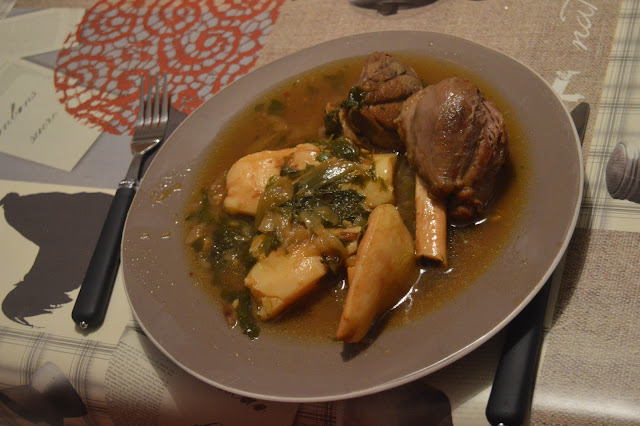Part 1
Weathered old posts with arms outstretched support a veranda along
the eastern side of the house. The end of one beam has been so degraded by wind
and rain it resembles a gargoyle’s head, staring out at the river.
The columbage walls consist of thin clay bricks set in lime
mortar between ancient timbers, bleached and scoured like driftwood. More
recent terracotta tiles have been laid on the floor and a metre-wide border of sand-coloured
river stones separates the veranda from the lawn.
The low-pitched roof is a cluster of
overlapping roman tiles, chunky and lichen-flecked.
The front door opens into a salon/lounge-room dominated by a huge
open fireplace. A blackened metal plate embossed with a coat of arms, like some
giant crusader’s shield, is attached to the back wall to protect the lime
mortar from the heat. On one side of the
fireplace sits a wicker basket holding paper and kindling, on the other, a
large copper pot with pine cones.
Massive oak girders, soil-brown in colour, run the length of
the room. They protrude through the eastern wall into the veranda, while on the
western side of the room they stand on two brick and mortar columns that flank
the door into the garden. Adzed from giant trees in the time of the Sun King, their
impressive girth supports a number of smaller, equally ancient joists, parched,
split and honeycombed by borer.
The renovation of this house, in the early 2000’s, was done
by an architect careful to preserve its 18th century character. Of
all the features he retained, the most impressive is the bousillage wall with its petrified planks and straw-embedded mud, cracked now like a creek bed
in a drought.
The house and adjoining low barn merge into one long,
single-storey building that stretches from the road to the river, a distance of
about 70 metres. It sits perpendicular, not parallel, to the Lot. Its southern
end is just a few metres from the water.
Library documents show La Maiterie was built around 1730. It
became the home of a priest, Father Bolurrieres, a scholarly and highly-regarded
man who held the positions of Curate of Castelmoron, Archdeacon of Marmande and
Monclar and the Canon of the Cathedral of Agen.
Father Bourrieres was known for his generosity and
compassion, a friend to the poor. Many a peasant received victuals at his door
or warmed their hands in front of his winter fire.
He bequeathed La Métairie to his nephew, Antoine Negre, on
condition that it would eventually be turned over to his parishioners. Mr Negre lived out his days in the house and upon the
death of his last surviving child, the property reverted to the parish.
We used to cycle past the house in the autumn of 2013,
whilst holidaying in Castelmoron. On the front gate hung a for sale sign with a phone number. I rang it out of curiosity.
The
price was high, which I put down to its river frontage.What I didn’t know was the barn had been converted into four
bedrooms, each with an en-suite.
When we returned to live in Castelmoron last year, we again
cycled past Le Maiterie on a regular basis. One day we saw the owners in the
front yard, so we stopped and introduced ourselves, and told them of our past interest
in the house.
Over the ensuing months, we would stop our bikes at the
front gate and call out to the Hanocqs. We learnt they lived near Versailles
and came down to Fongrave on an irregular basis. The house, with its swimming
pool and access to the river, was rented out for a tidy sum during the summer.
On one of our springtime stops at Le Maiterie, the Hanocqs
invited us in for a drink. We were captivated by the house.
We went home
and said to each other, “Wow, if only we could live there.” We couldn’t afford
the summer rent, so the idea was hatched to ask the Hanocqs if they would
consider a winter rental.







